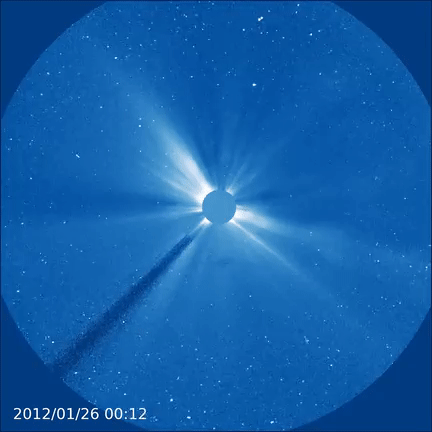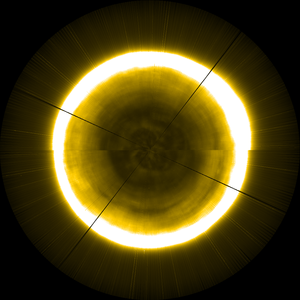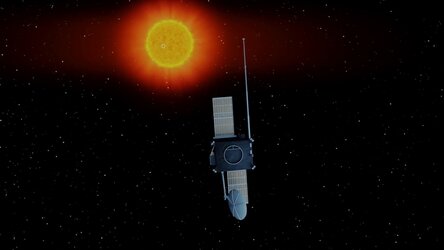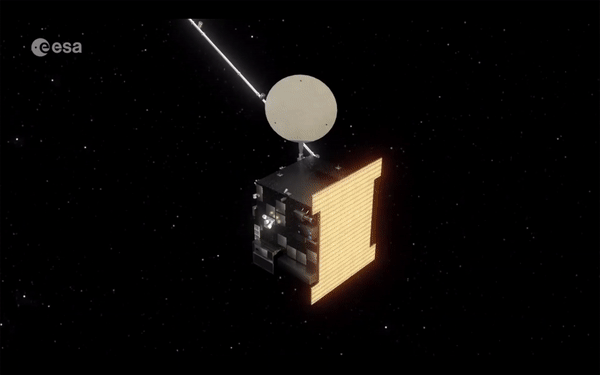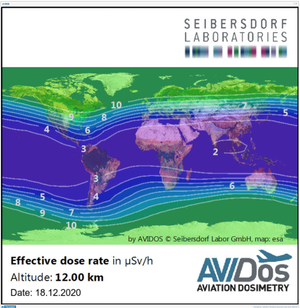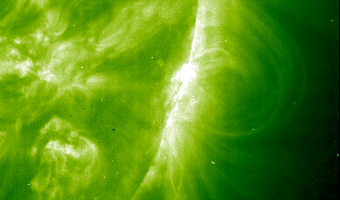Solar cycle 25: the Sun wakes up
The Sun has entered its 25th solar cycle and is about to wake up. For the last few years our star has been pretty sleepy, with few sunspots, bright flares or massive ejections of magnetised plasma emanating from its surface. This quiet period is known as the solar minimum, but things are starting to heat up again.
Experts on the Solar Cycle 25 Prediction Panel recently announced that the Sun has officially entered a new cycle, its 25th since we’ve had enough data to reliably recognise them. While we can expect space weather to get more exciting in the next few years, with peak sunspot activity expected in 2025, the panel came to the consensus that this next cycle will be very similar to the previous, both generally weaker than the average solar cycle.

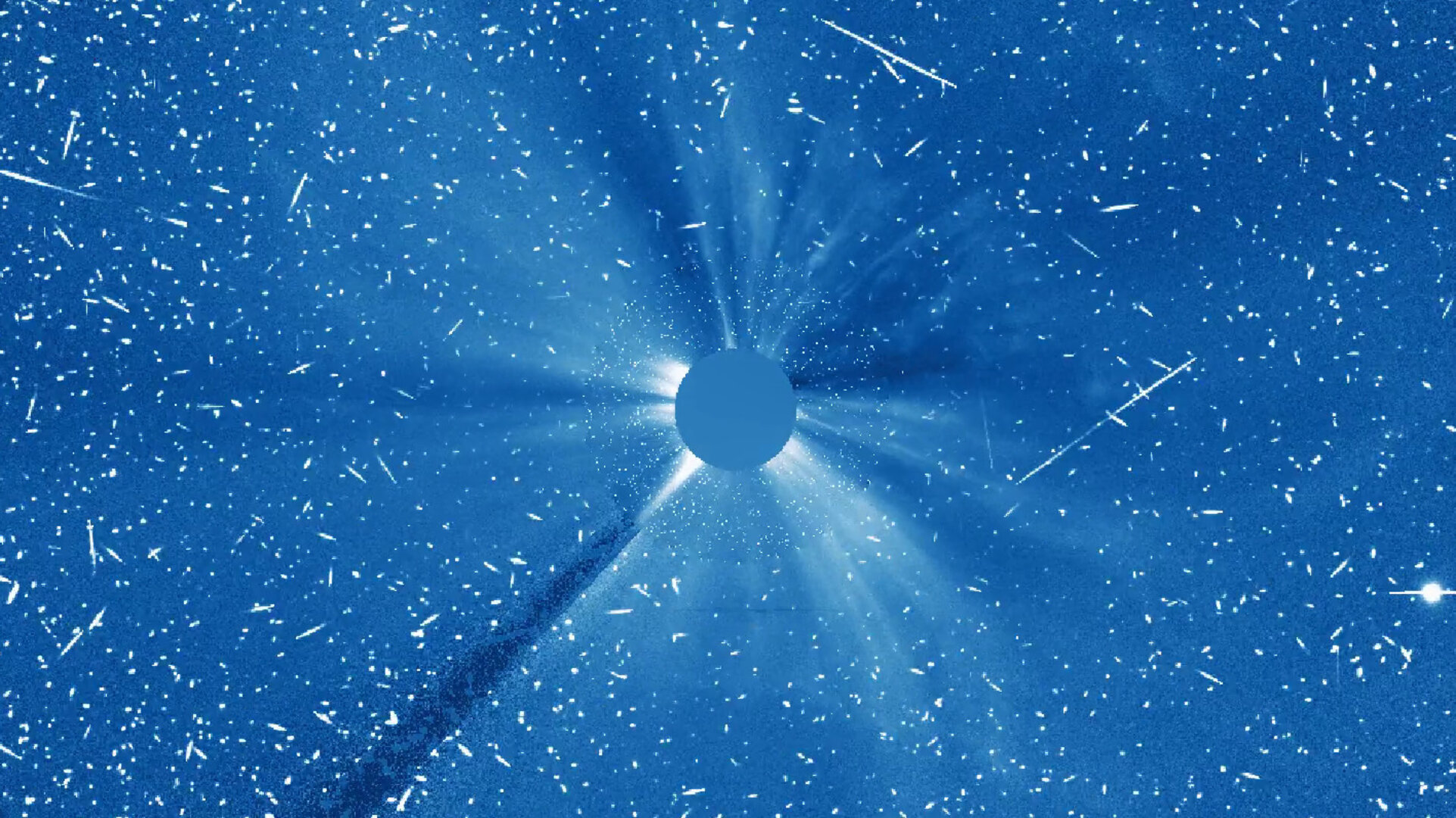
Access the video
“While small and medium-sized solar storms are more likely during peak solar activity,” explains Juha-Pekka Luntama, Head of ESA’s Space Weather Office, “it is important to remember that individual large solar events, huge flares and coronal mass ejections, can happen at any point, independent of where we are in the solar cycle or how strong the cycle becomes.”
If such solar storms impact Earth, they can create geomagnetic storms in our magnetosphere. While good news for aurora hunters, these storms can disrupt and even damage power grids on Earth and satellites in orbit, and the vital services they provide.
Repetitive yet unpredictable
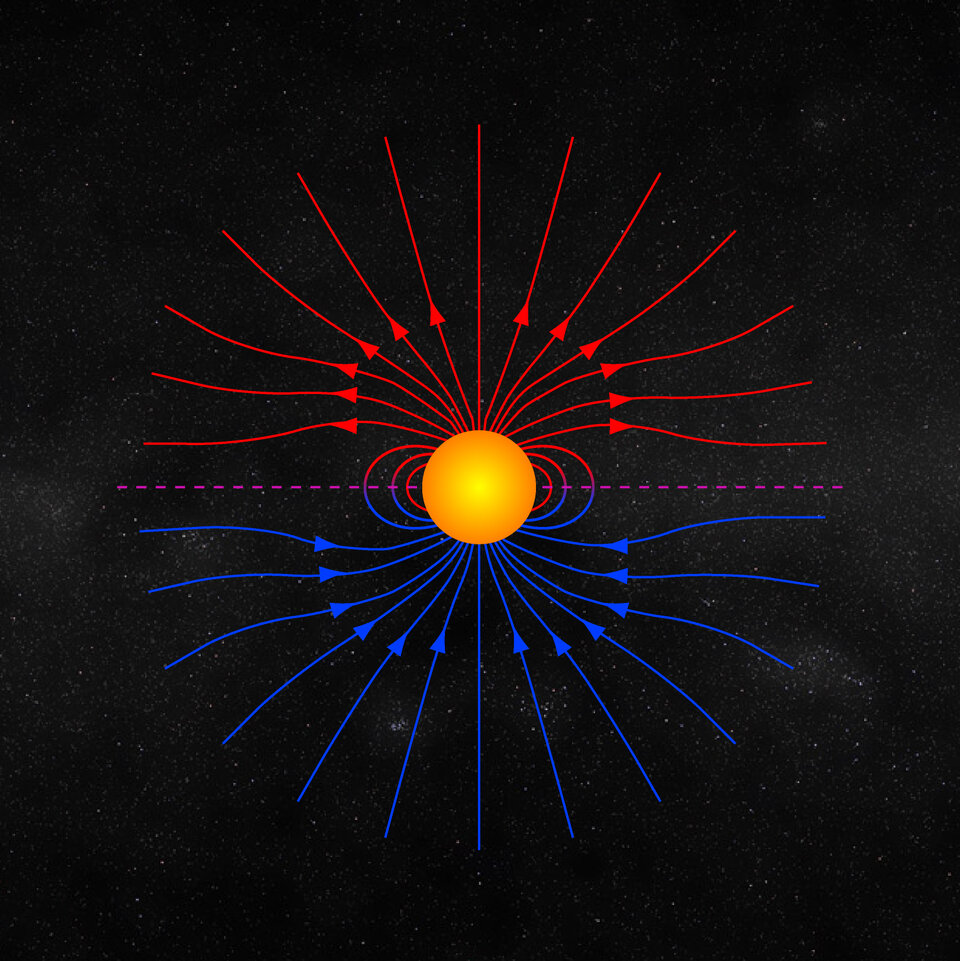
Like a bar magnet you may have used at school, the Sun has a magnetic field with north and south poles, and magnetic field lines stretching out far beyond the star itself connecting the polar regions.
These poles have a mysterious tendency of switching places, with north becoming south and south becoming north, in a cycle that lasts on average about 11 years. The magnetic field flip occurs at the peak of each solar cycle, the solar maximum, when activity is highest. After the flip, activity slows down for the solar minimum and a new cycle begins.
We’ve been studying the Sun for centuries, but the exact mechanism for this magnetic field flip remains a topic of scientific debate and theory. One of the key questions for ESA’s Solar Orbiter mission is to understand what drives the solar cycle, and by looking at the polar regions we hope to learn more about how the magnetic field – which drives solar activity – is generated.
Sun spotting
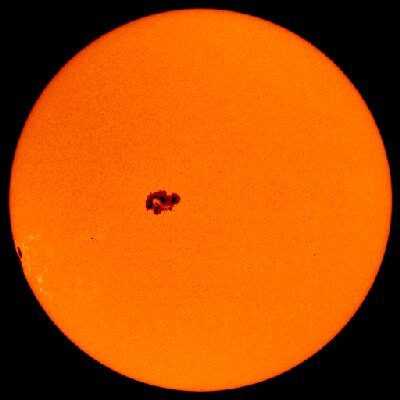
Sunspots are a useful tool to determine where the Sun is in its cycle. The temporary dark spots on the solar surface are patches of intense magnetic activity, slightly cooler than the material around them and so appear darker than surrounding areas. These transient spots correlate directly to solar activity, as most solar flares and coronal mass ejections originate from sunspot groupings, also called “active regions”.
Active regions, flares and ejections do follow the general sunspot cycle, meaning there are more during the solar maximum and less during the solar minimum. However, giant flares and coronal mass ejections are statistically as likely to happen at any point, independent of the strength of a cycle. So, we must always be prepared for “bad” space weather.
Cycle 25
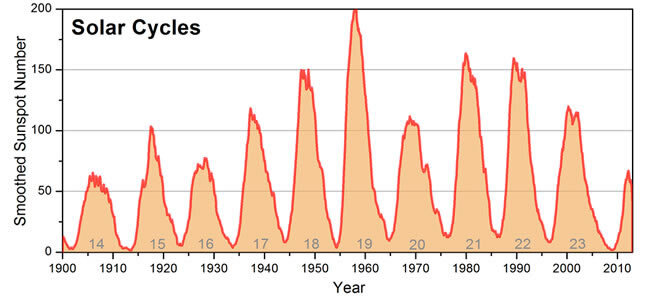
The latest solar cycle, number 24, was determined to have ended in December 2019 when the average number of sunspots from this cycle reached a minimum and the first sunspots of the new cycle began to emerge.
A new solar cycle is considered to start when new spots emerging at mid-latitudes on the Sun’s surface are opposite in magnetic polarity than the sunspots from the previous cycle. But because sunspot numbers fluctuate day-by-day and week-by-week, scientists use a rolling average meaning it takes a few months for clear patterns in activity to become clear.

Predicting just how active the Sun will get at the peak of a cycle is a notoriously difficult task. Just like weather on Earth, long term solar forecasts are difficult to gather, although we know there are general seasons of behaviour.
Although the consensus on Solar Cycle 25 is that it will be similar to the last, this prediction comes with more uncertainty than most as solar cycle 25 comes after a general decline in peak solar activity. At this stage, the next solar cycle could continue the downward trend towards cycles with weaker than average activity, or it could mark the beginning of a series of more active cycles.
Earth impact
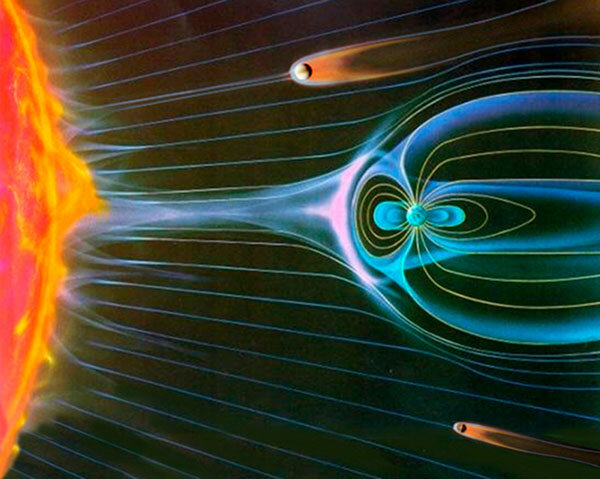
As solar activity picks up, the Sun will emit more high-energy particulate radiation and matter into the Solar System. From our position on Earth, the third rock from the Sun, any direct hit will have consequences for our magnetic field – the layer around Earth that protects us from the Sun’s outbursts – creating geomagnetic storms.
These storms have the potential to cause serious problems for modern technological systems, disrupting or damaging satellites in space and the multitude of services – like navigation and telecoms – that rely on them. Geomagnetic storms can also black out power grids and radio communications, as well as creating a radiation hazard for astronauts in space, even serving potentially harmful doses of radiation to astronauts on future missions to the Moon or Mars.
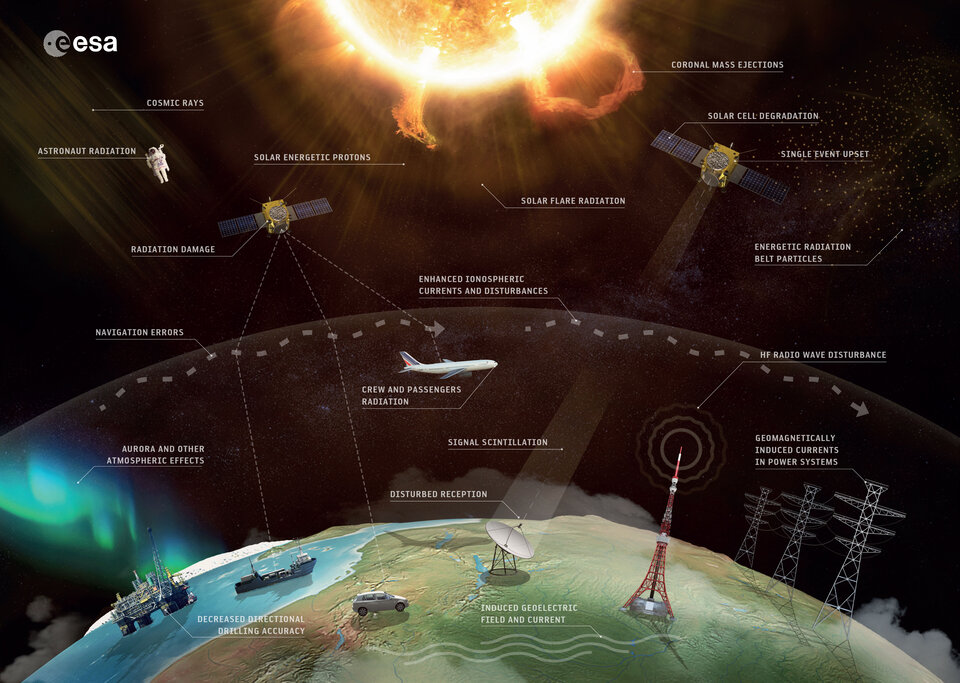
Fortunately, such events do come with some warning – complex sunspot groups bubbling up from beneath the solar surface leaving dark patterns across the disk.
While they can’t be stopped, advance warning of oncoming solar storms would give operators of satellites, power grids and telecommunication systems, as well as space explorers, the time to take protective measures.
ESA’s Space Safety programme is planning a unique mission that will do just this. The Lagrange mission will make much-needed observations of the Sun from a unique vantage point, the fifth Lagrange point. Watching our Sun ‘side on’, the Lagrange mission will get a preview of solar activity before it rotates into view of Earth, gathering the early data needed to provide such advance warnings.


Access the video
Watching the Sun from the fifth Lagrange point, the spacecraft will detect solar events and their propagation toward Earth with higher accuracy than is possible today, transmitting data home and distributing it into ESA’s Space Weather Service Network in near real-time, to generate warnings and forecasts.


